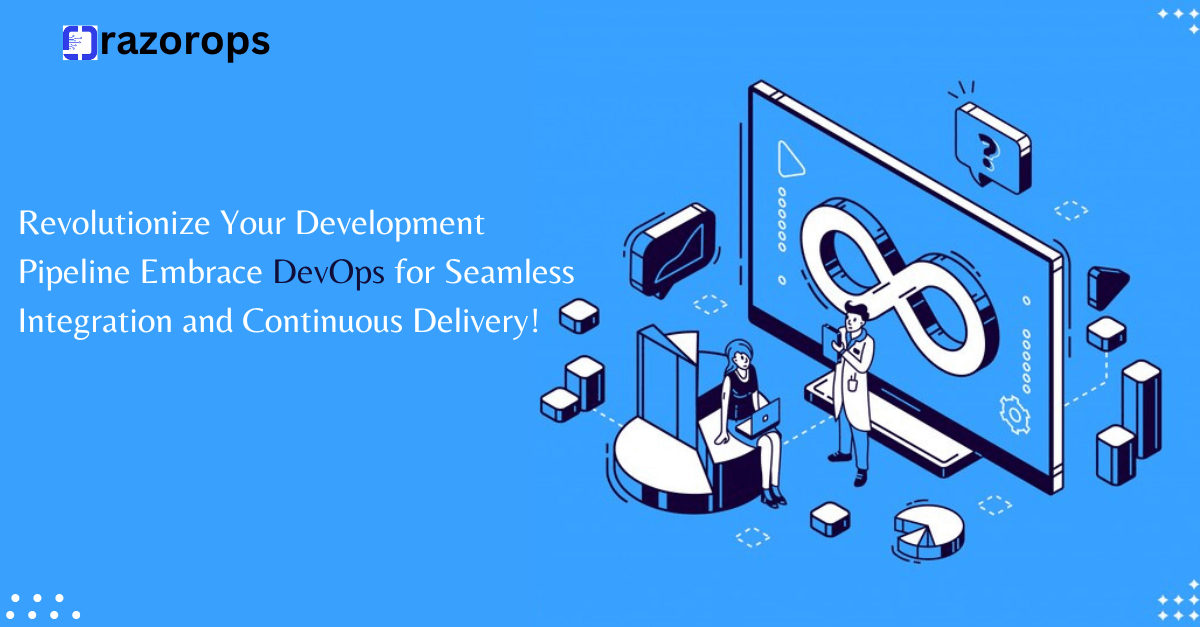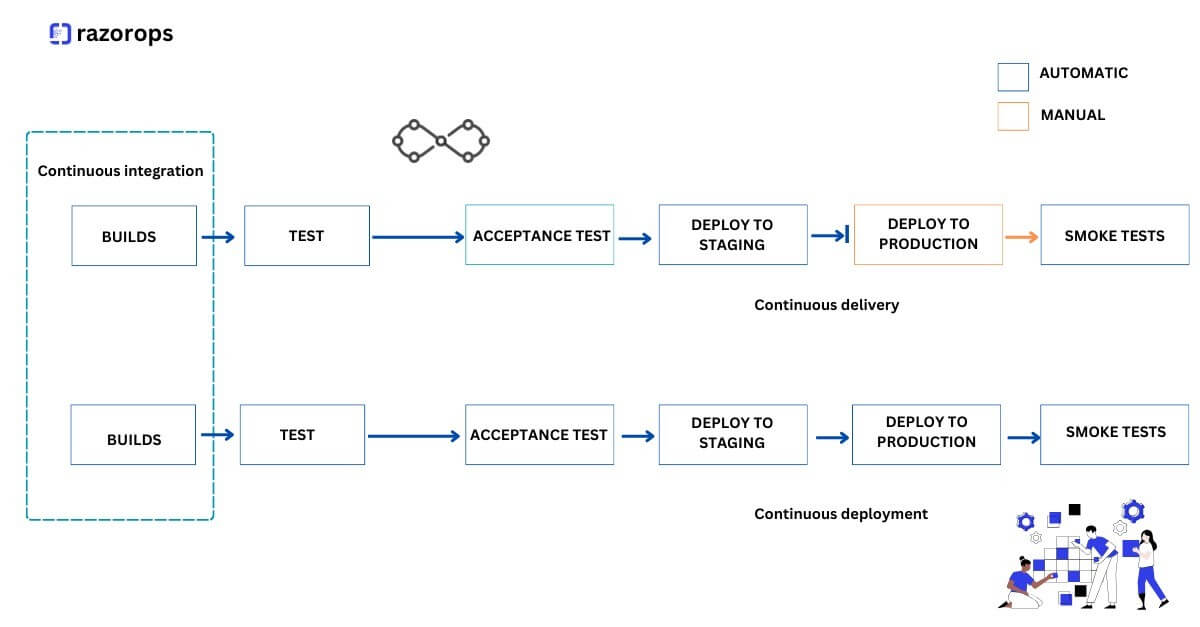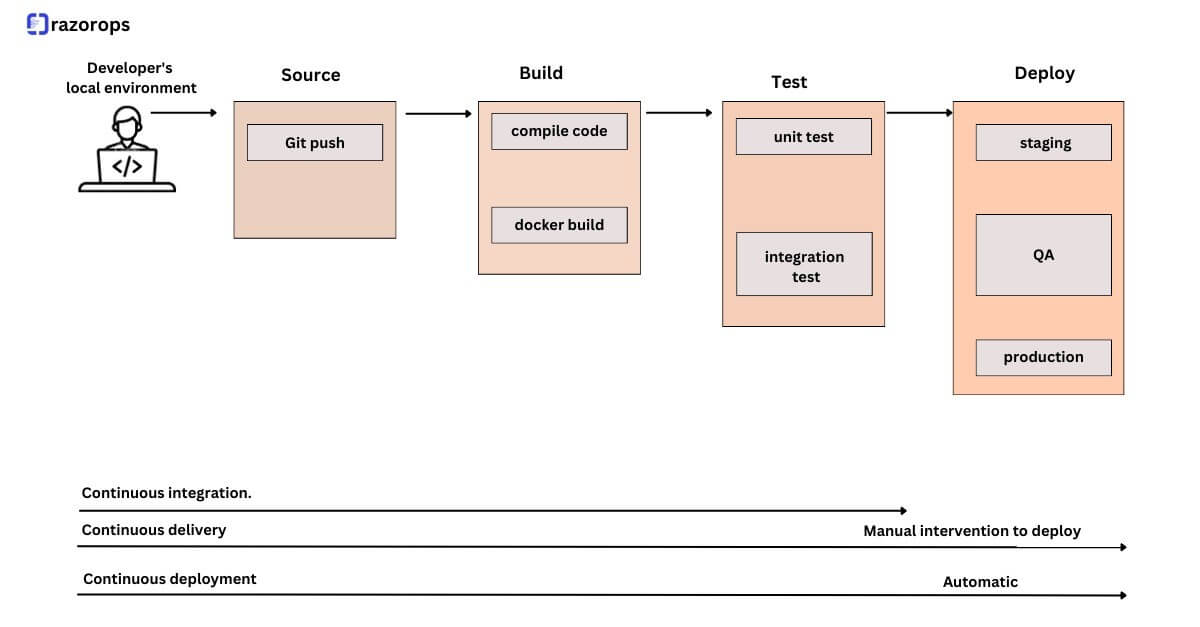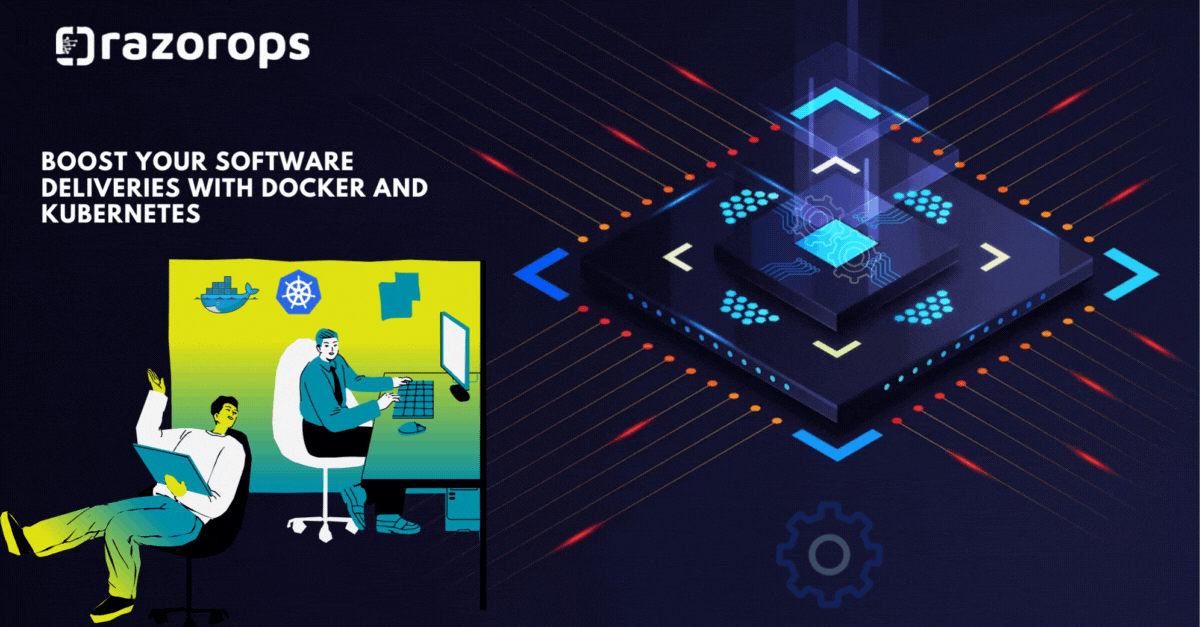Difference between Continuous Integration, Continuous Deployment and Continuous Delivery
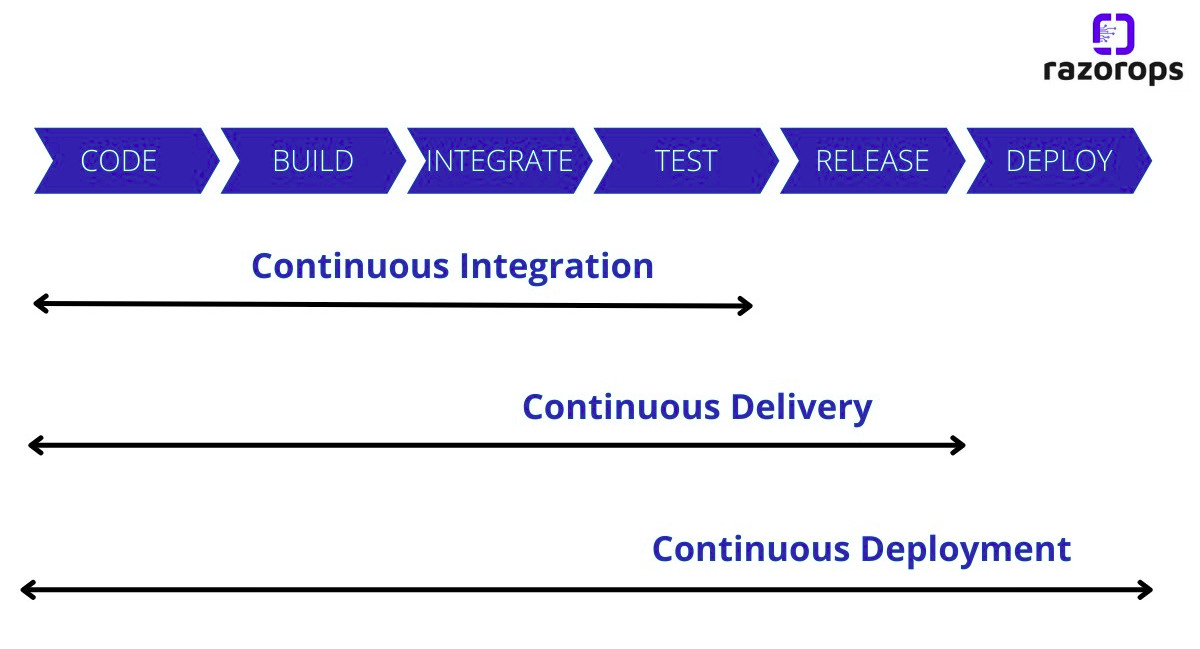
Continuous integration is a DevOps practice, where developers continuously integrate the code changes into a central repository. It most often refers to the build or the integration stage of the software release process.A continuous integration service helps to automatically build and run unit tests on the new code changes to find any errors instantly.
ADVANTAGES OF CONTINUOUS INTEGRATION
- Helps you to increase the software quality
- It enables you to conduct repeatable testing.
- CI allows developers to work independently on different features in parallel.
- It can increase visibility
Continuous Deployment is a software process that uses automated testing to confirm if changes to a core code doesn’t break the existing functionality and it is stable, for instant autonomous deployment to a production environment. With continuous deployment customers get the updates quicker which means developers also get the feedback faster which indicates there will be less pressure as small updates are pushed gradually compared to major updates not pushed that often.
ADVANTAGES OF CONTINUOUS DEPLOYMENT
- It enables you to increase overall productivity.
- It allows us to automate repetitive tasks.
- It provides a single view across all the environments.
Continuous delivery expands upon continuous integration by deploying all the code changes to the testing environment and later to the production environment after the build stage. When correctly implemented,this will allow developers to always have a deployment-ready build that has passed all the standardized test processes. It will help the developers to closely validate the changes and discover any new issues. With continuous delivery, you can choose when to deploy like daily, weekly, fortnightly, or whatever best suits the business requirements.
The Key difference between continuous delivery and continuous deployment is that , continuous delivery needs the presence of a manual approval to update to production. With continuous deployment, production happens automatically without explicit approval.
ADVANTAGES OF CONTINUOUS DELIVERY
- Automate the software release process which makes software delivery more efficient and quick
- It helps you to find bugs earlier in the delivery process.
- CD allows to deliver updates to immediately and frequently to clients/customers

Let’s check: How Container Native CI/CD Razorops Works
Continuous Integration vs Continuous Deployment vs Continuous Delivery
| Continuous Integration | Continuous Deployment | Continuous Delivery |
|---|---|---|
| CI refers to the versioning of source code | CD is an approach to make changes for new features, configuration and also bug fixes | CD is an approach to develop the software in a short cycle |
| It refers to the versioning of source code | It refers to automated execution of the source code | It refers to the logical evolution of CI |
| It uses unit tests | Any testing strategy can be used | It uses business logic tests |
| Focuses on automation testing | Focus on change in all stages of your production pipeline | Focuses on releasing new changes |
| It helps you to identify and fix the bugs early | It enables you to quickly deploy and validate new features | It allows developers to check software updates |
Conclusion
The primary goal of Continuous Integration, Continuous Delivery and Continuous deployment is the same - to make software development and the release process faster and efficient . While software continues to update with DevOps, the challenges and struggles of companies implementing DevOps are real and high. Razorops will help you to overcome these challenges. Razorops helps you to have an end-to-end CI/CD pipeline so your project can be live in an easy way.



